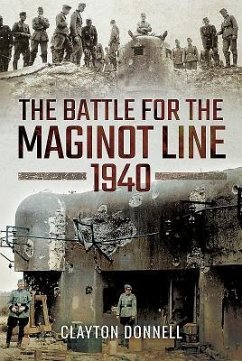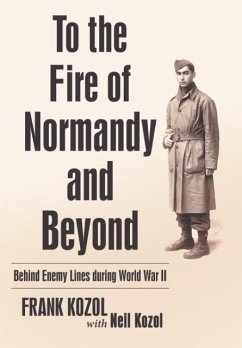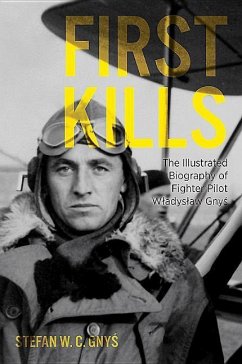
The Normandy Battlefields: Bocage and Breakout
From the Beaches to the Falaise Gap
Versandkostenfrei!
Versandfertig in über 4 Wochen
22,99 €
inkl. MwSt.

PAYBACK Punkte
11 °P sammeln!
The Normandy Battlefields: D-Day & the Bridgehead ended as the Allies fought to expand their D-Day foothold. In Bocage and Breakout, Leo Marriott and Simon Forty take the story forward as the success of the invasion continued into the Cotentin, with Cherbourg falling on 29 June, before it bogged down in face of determined German defense and the bocage countryside¿innumerable small fields surrounded by hedgerows, each one hiding anti-tank weapons, mortars and machine guns. As US First Army fought its way south, on the eastern edges of the bridgehead, British and Canadian forces were fighting a...
The Normandy Battlefields: D-Day & the Bridgehead ended as the Allies fought to expand their D-Day foothold. In Bocage and Breakout, Leo Marriott and Simon Forty take the story forward as the success of the invasion continued into the Cotentin, with Cherbourg falling on 29 June, before it bogged down in face of determined German defense and the bocage countryside¿innumerable small fields surrounded by hedgerows, each one hiding anti-tank weapons, mortars and machine guns. As US First Army fought its way south, on the eastern edges of the bridgehead, British and Canadian forces were fighting a war of attrition around Caen facing the bulk of the German armor as division after division was fed into Normandy. Like a pressure cooker, the fighting intensified until, seven weeks after D-Day, Operation ¿Cobra¿ broke the German line. Quickly Patton¿s Third Army, operational from 1 August, flooded through the gap exploiting the German confusion, encircling what was left of the German armies in the Falaise Pocket and advancing quickly through into Brittany. Three weeks later, the Battle of Normandy was over, the routed German Army¿without most of its heavy weapons left in the Falaise Pocket or on the banks of the Seine¿was retreating helter skelter back towards Germany and the Low Countries pursued by the Allies in a reverse of the 1940 Blitzkrieg campaign. The three months of war in June¿July 1944 were brutal, with losses of front-line troops as heavy as in World War I. The German defense was tenacious, particularly in face of Allied air supremacy. The Allies struggled to get into a position to allow their more mobile forces room for maneuver and and the fighting was ferocious. When victory came, it came at a cost: 209,672 casualties among the ground forces, including 36,976 killed and 19,221 missing. The Allied air forces lost 16,714 airmen. The corresponding German losses were even more significant: some 450,000 men, of whom 240,000 were killed or wounded. More important to the Germans were the losses of heavy equipment¿tanks, assault guns, artillery, personnel carriers. As an example, 12th SS Panzer Division had lost 94% of its armor, nearly all of its artillery and 70% of its vehicles. With c20,000 men and 150 tanks before the campaign, after Falaise it had 300 men and 10 tanks. Mixing text, maps and images, many of them specially commissioned including aerial photography, The Normandy Battlefields: Bocage and Breakout explains and interprets the complexities of the Normandy campaign in an original and cohesive package.












